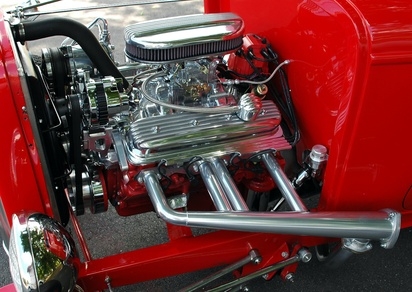
The combustion chamber must contain hot gases if the engine is to work efficiently and last a long time. The cylinder head forms the top of the combustion chamber and contains the exhaust and intake valves. If the valves don't seat completely, they will allow hot gases to leak out of the combustion chamber, reducing compression, horsepower and the life of the engine. Testing the cylinder head for leakage requires a special tool but is simple and easy.
Warm up the engine, then shut it off.
Remove the spark plug from the cylinder that's being tested.
Take the key out of the ignition or remove the central spark plug wire.
Turn the engine by hand until the cylinder being tested is at top dead center. The valves will be completely closed.
Look at the gauge. It's measuring the pressure from the compressed air source. Write down the number.
Install the adapter in the spark plug hole. The combustion chamber will fill with air from the compressed air source. Turn the valve that shuts off the compressed air and look at the gauge again. The gauge will read the pressure of the air left in the combustion chamber after the valve is closed. Some leaks out immediately.
Compare the numbers from the compressed air source and the amount of pressure the cylinder was able to hold after the compressed air was removed. The pressure drop is measured in percentages. If the pressure from the compressed air was 100 PSI and the combustion chamber measure 90 PSI, the leakdown was 10 percent.
All combustion chambers leak air. Consult the shop manual or the leakdown tester manufacturers instructions for the acceptable percentage of leakdown.